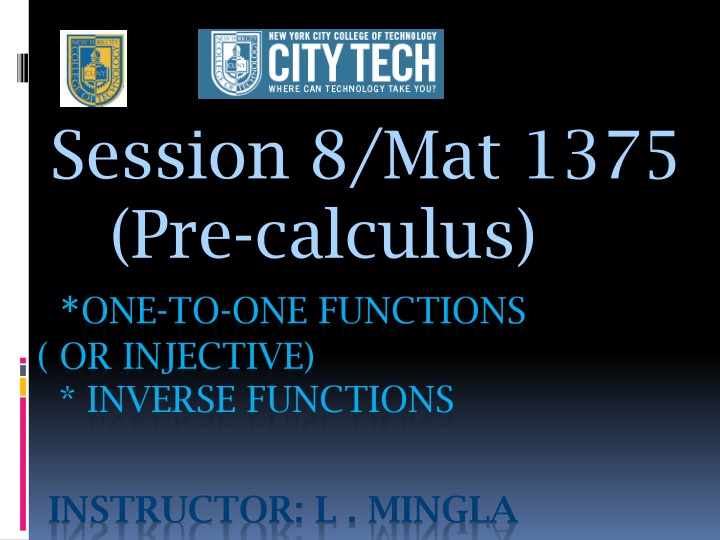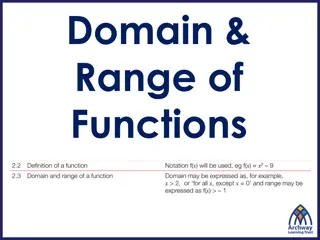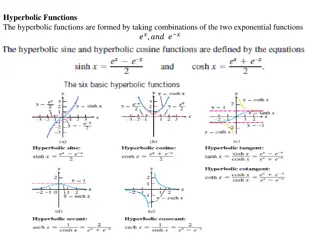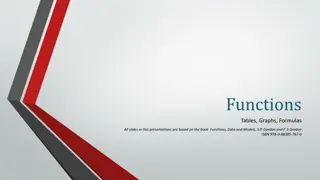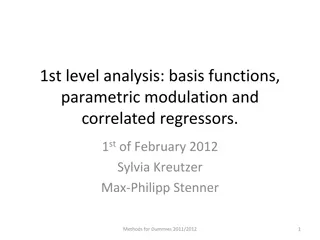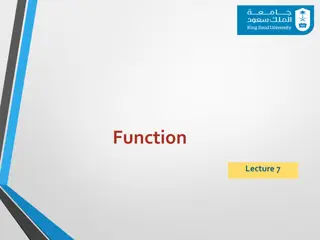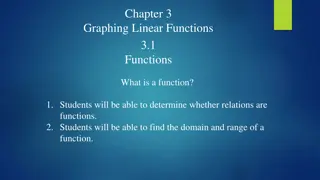One-to-One Functions
This content delves into the concept of one-to-one functions in pre-calculus, exploring the definition, examples, and the horizontal line test to determine if a function is one-to-one. It covers the characteristics of one-to-one functions and provides insights into inverse functions and graph representations.
Download Presentation

Please find below an Image/Link to download the presentation.
The content on the website is provided AS IS for your information and personal use only. It may not be sold, licensed, or shared on other websites without obtaining consent from the author.If you encounter any issues during the download, it is possible that the publisher has removed the file from their server.
You are allowed to download the files provided on this website for personal or commercial use, subject to the condition that they are used lawfully. All files are the property of their respective owners.
The content on the website is provided AS IS for your information and personal use only. It may not be sold, licensed, or shared on other websites without obtaining consent from the author.
E N D
Presentation Transcript
Session 8/Mat 1375 (Pre-calculus) *ONE-TO-ONE FUNCTIONS ( OR INJECTIVE) * INVERSE FUNCTIONS INSTRUCTOR: L . MINGLA
Definition of the Function A function f consists of two sets, a set D of inputs called the domain and a set C of possible outputs called the codomain, and an assignment that assigns to each input x exactly one output y.
One-to-one functions (or injective) Definition 7.1. A function f is called one-to- one (or injective), if two different inputs X1 X2 always have different outputs f(x1) f(x2).
Examples of non one - to one function Example 7.2. As you know, the function f(x) = x is not one-to-one , because, for example, for inputs 2 and 2, we have the same output: f(-2)=f(2)=4
Functions in graphs X1 X2 while f(x1) = f(x2). For x=2 X=-2 F(2)=4 F(-2)=4 In general: Y0 = (x0) =( x0) Not one to one function (Horizontal line test)
Is a one to one function based on the definition? Discuss in pairs and draw a conclusion Horizontal Line Test). A function is one-to-one exactly when every horizontal line intersects the graph of the function at most once.
For each value of x there is only value of y & for each y there is only one x : (1-1) & R=(- , ): onto On the other hand, g(x) = x is one-to-one, since, for example, for inputs 2 and 2, we have different outputs: g( 2) = ( 2) = 8, g(2) = 2 = 8
Horizontal line test This graph intersects with a horizontal line at some y0 only once. This shows that for two different inputs, we can never have the same output y0, so that the function f is one-to-one.
Onto functions and not onto functions A function f from A to B is called onto if for all b in B there is an a in A such that f (a) =b. All elements in B are used.
A function f from A to B is called one- to-one (or 1-1) if whenever f (a) = f (b) then a = b. No element of B is the image of more than one element in A.
One to one functions and onto functions One-to one & onto/one to one-not & onto onto
One to one functions (for c and d graph in the graphing calculator and see
Functions in graphs For each value of x there is only one value of y & for each y there is only one x ( R=(- , ) Not all values of y are used: R=[-2, )
Find the inverse of y = x2+ 1, x > 0, and determine whether the inverse is a function.
The function's domain is x > 0; the range (from the graph) is y > 1. Then the inverse's domain will be x > 1 and the range will be y > 0.
Lets look at the original graph and its inverse
How do we find the inverse functions ?
How can we restrict this function to make it one-to-one function
Two inverses of each other undo each other
Work in pairs to check if the pairs of functions are inverse
Graph of inverse function symmetrical to y=x line
f Reflected along diagonal to its inverse f
